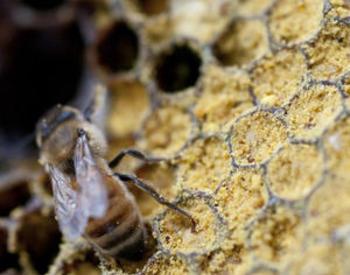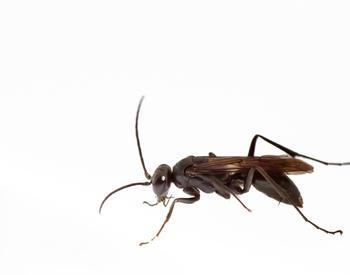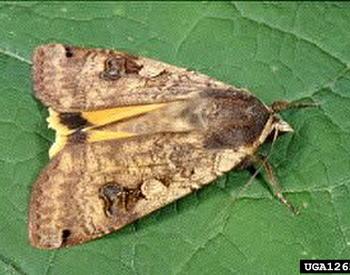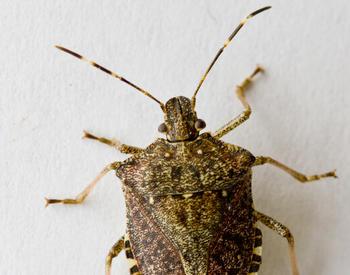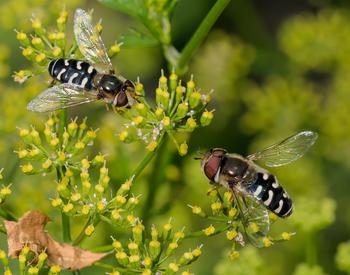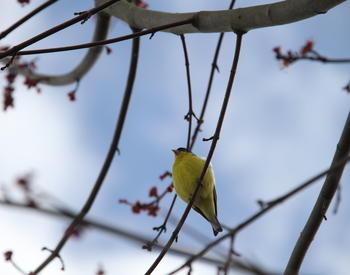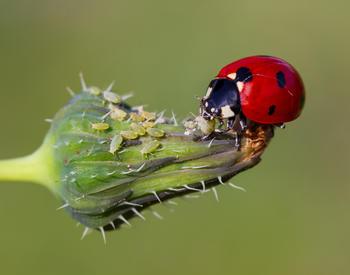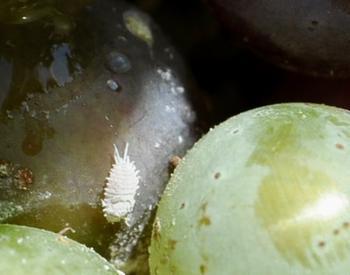We will be demonstrating how to sample a honeybee colony for Varroa mite populations. It's September and it's a crucial time of year to sample a hive for Varroa mites, as the mite populations are increasing, while the honeybee populations are decreasing in preparation for winter.
We also want to know how well our late summer mite treatments were effective and how the mite populations change throughout the season.
Field Equipment
We will begin with the alcohol wash method. The field equipment you will need to sample for Varroa mites are your standard beekeeping equipment, a wide mouth jar with a sealable lid, and a cooler filled with ice.
First, smoke the entrance.
Open the hive and smoke the top bars of the brain. All samples should be taken from the brood nests where the mite count is most likely to be the highest.
Find a frame in the brood nest. Make sure the queen is not on the frame that you are sampling. You can hand the frame to a second person to double-check for the queen.
When you're ready to sample, brush the edge of the jar along the backs of the bees. Using long downward strokes, the bees will fall into your jar. The right amount of pressure is important. Too much pressure can damage the brood, but too little pressure will result in an inadequate sample size of bees.
Gather approximately 300 bees, which is about a half a cup. You can take samples from multiple frames if you don't collect enough bees.
Seal the jar and place in the cooler until you can place the jar in the freezer.
Equipment needed for the mite count in the lab includes ethanol, or isopropyl rubbing alcohol, a dish for counting, and forceps.
Remove bees from the freezer.
Pour enough alcohol in the jar until the bees are submerged.
Empty contents of the jar into a dish and separate mites from bees by washing.
Count mites and bees. The number of mites divided by the number of bees is the percent infestation in your colony.
Sampling
We will demonstrate the powdered sugar shake method of a Varroa sample. For sampling, you will need a wide mouth jar with a 1/8 inch mesh screen lid, and powdered sugar.
First, smoke the entrance.
Open the hive and smoke the top bars of the frame. All samples should be taken from the brood nest where the mite count is most likely to be the highest.
Find a frame in the brood nest. Make sure the queen is not on the frame that you are sampling.You can hand the frame to a second person to double-check for the queen.
When you're ready to sample, brush the edge of the jar along the backs of the bees. Use long, downward strokes, and the bees will fall into your jar. The right amount of pressure is important. Too much pressure can damage the frame of brood, but too little pressure will result in an inadequate sample size of bees. You will be able to determine the right amount of pressure after sampling a bit.
Gather approximately 300 bees, which is about a half cup. Sift two tablespoons of powdered sugar, or enough to coat all of the bees, through the mesh lid, and roll the jar to distribute the sugar.
Let the jar sit for a minute.
With the bees still in the jar, shake all the sugar into a container, preferably white, and add water to dissolve the sugar.
Return the sugar-coated bees to the colony when done shaking.
Count the mites in the container and calculate the percentage of mites over 300 bees.
